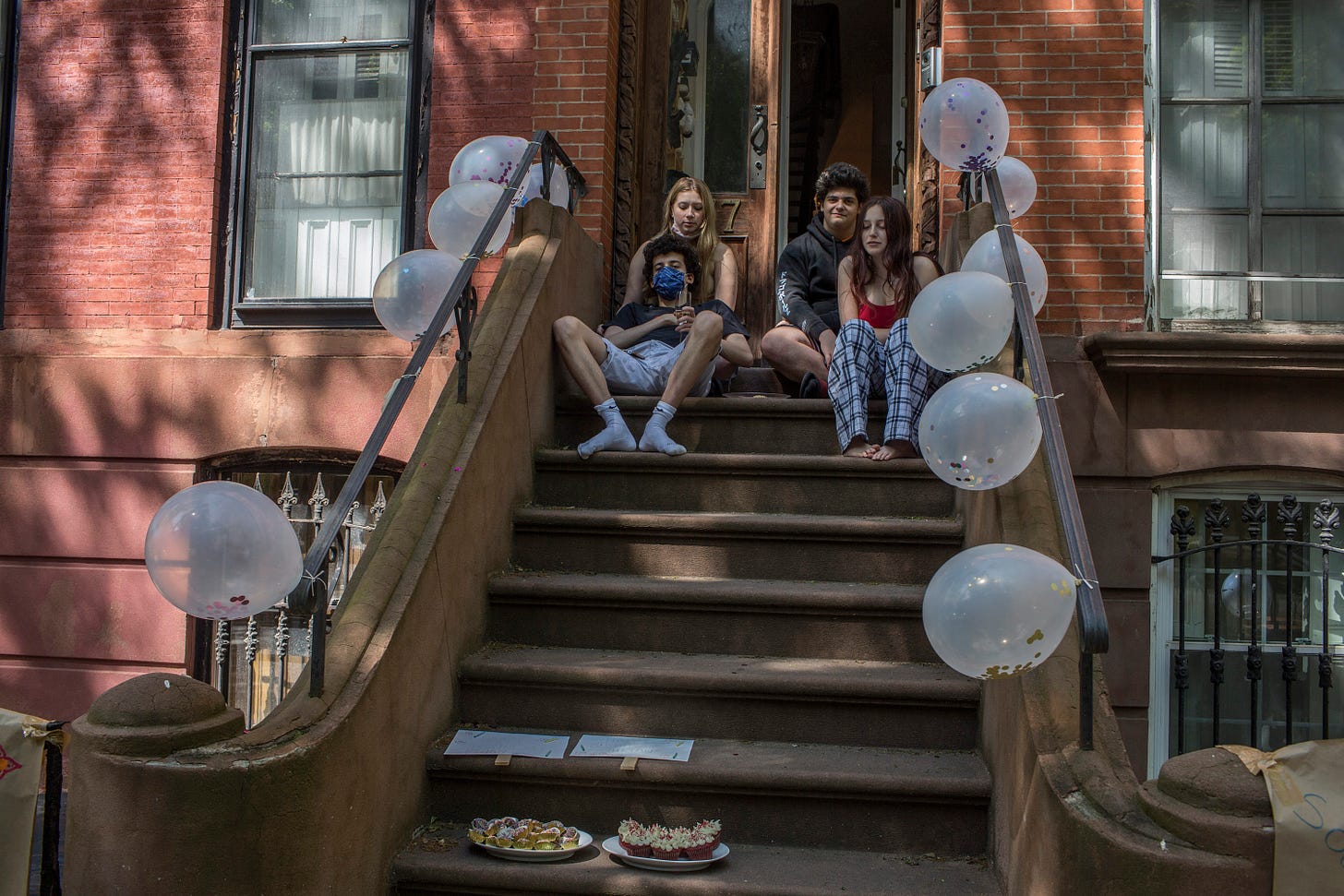
No, Teens Are Not Having ‘Coronavirus Parties’
The latest in a long line of rumors—remember the Tide pods?—born of intergenerational incomprehensibility.

The story stank from the beginning. Reports said reckless teenagers in Alabama were staging parties with contests to see who could catch the coronavirus first, with the winner taking home a cash prize in addition to a debilitating illness.
No one cared that the sourcing was thin. A Tuscaloosa city council member said she’d heard about it from the fire department. The fire chief said he’d heard from doctors that some kids had attended parties knowing they had COVID-19 symptoms, which, somehow, was confirmation of a contest to get sick. And, the city councilor claimed, “the state confirmed they also had the same information.”
On this basis, the tale of the coronaparties was picked up and reported across the country. The Associated Press carried it, and many other outlets circulated the AP story or their own versions.
Reporters and editors didn’t ask if such a contest was possible. How would you run the game? Recruit players, collect money, verify winners, and issue payouts? Surely, such an undertaking would leave evidence. Or, at least, an actual teenager or two to interview.
It’s no surprise the story quickly fell apart. In a statement released on Twitter, the Alabama Department of Public Health said it “could not verify any parties where persons tried to contract” COVID-19. So there is no confirmed evidence of anything. Not the contest. Not even that teenagers attended parties knowing they were sick. The AP released a second report walking back the first.
The COVID contest story is the latest example of adults jumping to conclusions about teenagers and panicking. Since the mid-2000s, rumors have swirled about “pill parties,” in which teens supposedly swap prescription drugs swiped from their parents, and “rainbow parties,” where boys receive multiple sex acts from assembled girls. Even when there is evidence for the existence of a troubling trend, credulous news outlets can exaggerate the problem—as when, two years ago, a handful of teens really did eat Tide pods, leading to overblown fears of a supposed nationwide poisoning fad.
Evidence that these parties and trends were ever real is scarce, but when teens are involved, who needs facts? Teenagers are a mystery—their minds a black box—but everyone knows they do stupid things. Getting sick on purpose is exactly the kind of stupid thing they’d do.
The assumption that adults can’t understand teenagers has nothing to do with biology. It’s a byproduct of teen culture and how it developed in America during the Great Depression, World War II, and the postwar Baby Boom.
The word “teenager” was rarely used before WWII, but it began to catch on in the 1940s as a way to denote a then-emerging youth culture, characterized by things like distinctive music, clothes, and language. But teenagers were created not by hormones but by the push in the 1930s to get children into schools and out of the workforce where they competed with men for scarce jobs. As high school education became nearly universal after the war, young people became socialized by their peer group rather than the mixed-age groups common in the factory or on the farm.
At the same time, businesses found new customers in teenagers with disposable income and an urge to feel simultaneously special and just like the kids at school. Marketing experts grasped that adolescent tastes could be catered to and shaped in ways that separated young people from their money and reinforced their peer-based concerns. Upon its founding in 1944 as a fashion magazine for teenage girls, Seventeen pitched itself to advertisers as indispensable to capturing the youth market. Girls wanted to “look, act and be just like the girl next door,” Seventeen observed. Sell to one girl in a group of “teenmates,” the magazine promised, “and the chances are you’ll sell them all.”
The perceived distinctiveness of teens intensified in the postwar period until the 1960s “generation gap” made it official: Parents and their baby boomer children didn’t understand each other—couldn’t understand each other—because they just weren’t part of the same generation.
Opposition between teenagers and adults was always baked into the performance of teen culture, but the mutual incomprehensibility was always overblown, too. Even in the rebellious Sixties, social scientists found that parents and children generally shared similar values, though their tastes in clothes and music differed. The real gulf, then as now, was between parents and other adults, which was replicated in the disparity of opinions between teenagers and other teenagers.
If adults have so much in common with teenagers, then why are older people so eager to believe wild stories about them? The perception of difference allows adults to project anxieties onto a group that doesn’t have to be understood, only worried about.
Everyone is anxious about the pandemic. It looked like the worst was over and we could socialize again. Now, the infections have roared back, and the future is uncertain. Rather than dealing with the uneasiness, it’s easier to blame idiot teen “superspreaders” for ruining our return to normal.
Maybe teenagers are more cavalier toward the pandemic than adults are. But they’re not aliens, and there’s a surefire way to find out what they’re thinking about COVID-19: Ask them.









